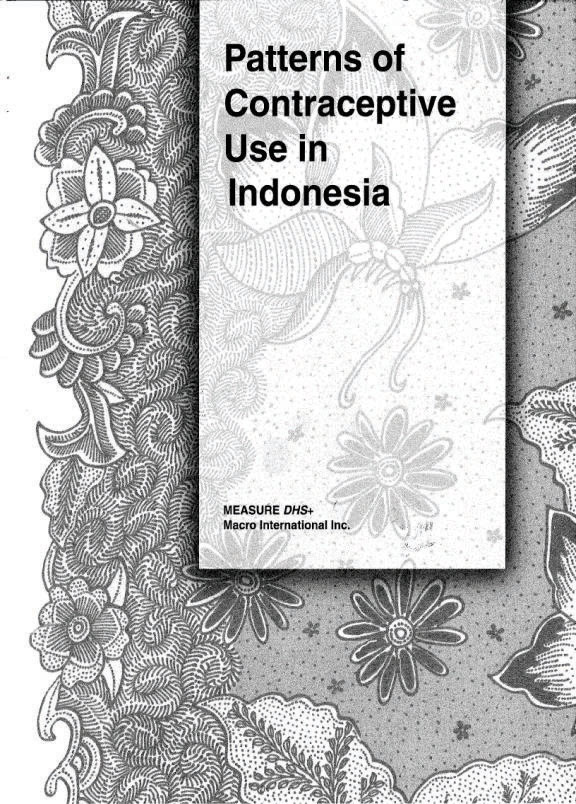- PUBLICATIONS
- JOURNAL ARTICLES
- ORDER PUBLICATIONS
Publications Summary
- Document Type
- Further Analysis
- Publication Topic(s)
- Family Planning
- Country(s)
- Indonesia
- Survey
- Indonesia DHS, 1997
- Language
- English
- Recommended Citation
- Fathonah, Siti. 2000. Patterns of Contraceptive Use in Indonesia. DHS Further Analysis Reports No. 30. Calverton, Maryland, USA: Macro International
- Download Citation
- RIS format / Text format / Endnote format
- Publication Date
- March 2000
- Publication ID
- FA30
